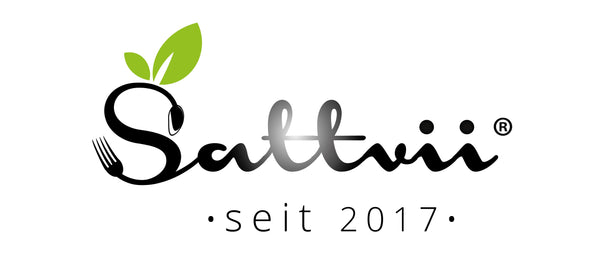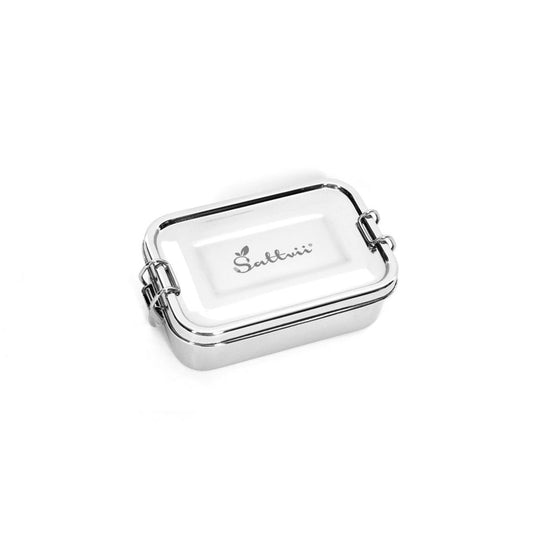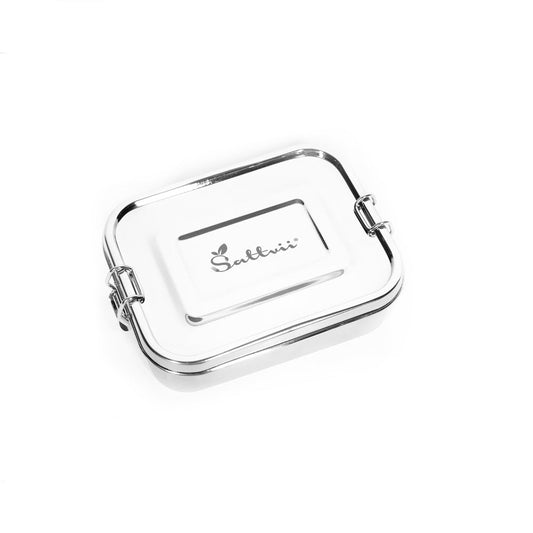
What greenwashing is and why you should avoid it
shares
As you may have noticed by now, the topic of "environment" and "sustainability" is becoming more and more present. Nature conservation is important to people - and that's a good thing.
Unfortunately, large companies now also know this and try to advertise with supposedly sustainable products, which unfortunately are not always as green as they appear.
The benefits of a Sattvii lunch box
What is greenwashing anyway?
Greenwashing is English and means something like “washing green”. In a figurative sense, one could say it also means something like “put on a green coat”.
As nice as it may sound, greenwashing is a big problem because it is a critical PR method. The aim of this is to create a supposedly sustainable image of a company that is not as sustainable as it seems.
These are campaigns and PR campaigns that try to put products or entire companies in a "green light" so that the customer thinks the company is particularly environmentally friendly, fair and ethical correct.
And that's what it's all about:
An image of ecological responsibility should be created. The thing is - often these are not directly untruths. The company's "green promises" may be true, but the basic or core business is usually not environmentally friendly. Put simply, the company is distracting from the real issues that are causing their problems.

And why does greenwashing work so well?
Greenwashing works so well because buyers have become more and more aware of sustainability in recent years.
According to the Federal Environment Ministry, sales of green technologies and products should have doubled to 3.1 trillion euros by 2020. Polls were conducted ahead of the 2019 European elections. These revealed that more than half of those surveyed see the topic of "environmental protection" as the most important topic.
That means: the companies know with which topic they can "lure" customers and what they are likely to "jump at" if they are interested in this topic.
Good to know:
It's great that you're trying to live more consciously and sustainably. With our lunch boxes for children and adults, we at Sattvii try to make a positive contribution as best we can. So feel free to visit our Shop. Our products are toddler friendly and the perfect lunch box for school or kindergarten.
Unsure? Feel free to visit our purchasing advisor
Nowadays, many companies are quick to give themselves a "green stamp". The easiest way to do this is with symbols or pictures on the packaging, which can give you the wrong impression.
When buying eggs in the supermarket, you have probably noticed that the chickens are usually pictured in a large, green meadow. Unfortunately, it is rarely the case that the animals are really kept in this way.
Meat is similar. The pigs look happy and are in a lush green meadow.In the meantime, many people have seen the pictures of conventional factory farming and actually know that the depiction of the packaging does not correspond at all to reality
What you should also know is that companies can also create their own seals or stamps. These then wrongly have nothing to do with an official registration office or anything else.
However, these seals often look so sustainable and serious that you think you are buying a great, sustainable product.
You've probably bought a product at one time or another because it was mainly regional, right? It's also a good thing. But if some products are labeled “regional” or “from here”, that doesn’t necessarily mean that they are also regional. From a legal point of view, there is no binding definition of where regionality begins and, above all, where it ends.
The same problem applies to the terms "climate-friendly" or "environmentally friendly". These terms are neither protected nor clearly defined.

Limits on greenwashing itself
Clothing shops, for example, advertise that their shirts are made from organic cotton. That already sounds good. Unfortunately, that's not all.
The downside, for example, is that it is usually only a tiny fraction of the entire range that is produced sustainably.
On the other hand, the aim is that the customer faster forgets that the clothes he is buying despite everything, was produced under inhuman conditions.
So one product is taken from the entire range and highlighted with the keyword "sustainability" so that the rest is forgotten more quickly.
It is just as bold that some companies specifically emphasize sustainability characteristics that are already required by law. To this day, companies still sell hairspray or mattresses with the statement "CFC-free", although this substance has been banned by law since 1991 anyway.
The consumer advice center NRW describes this procedure as "Advertising with self-evident". The group leader "Food and Nutrition", Bernhard Burdick, says: "It's like saying: our mineral water is gluten-free and without lactose. It is obvious, to the one turns it out.”
Companies should definitely be careful here. If the customer first becomes aware of this manipulative approach, he will definitely lose confidence in the brand and the company.
Especially in "social media" times, a kind of boycott can quickly be called for and the respective company can quickly feel this behavior.

But:
Fortunately, not all corporate sustainable marketing strategies fail. It is positive if, for example, a long-term strategy or perspective can be identified. That would mean, for example, that a company obviously advertises and admits that this one product only accounts for 1% of sales so far, but announces that it will increase this proportion tenfold over the long term.
Nutella, for example, claims to have only used palm oil from sustainable cultivation plantations since the beginning of 2013.The goal is to reduce the use of conventional palm oil over time. The company has already received praise for this strategy from the WWF and Greenpeace.

Your task:
Your task now is to pay even more attention to the supermarkets and shops. Do not let yourself be "lulled" by the advertising promises and question them.
Of course, it's also understandable that it can be very overwhelming to find your way through the jumble of seals and symbols.
What helps, for example, are seals that are checked by independent bodies. These are trustworthy.
You should be suspicious if certain seals are only available in certain supermarkets or only on certain products from individual producers.
As a little help, we can recommend the federal government’s project “Seal clarity”. Here you get a good overview of seals of food, textiles or electrical appliances.
If you would also like to be informed when you are out and about, for example via your smartphone, then the app from the nature conservation association NABU is ideal. With her you have the opportunity to photograph the products and their seals directly in the supermarket. The app then tells you what the symbol means and what it says.
We hope we were able to help you with today's article to find your way through the jungle of clever marketing.
If you have any further questions, please contact us here.
.



